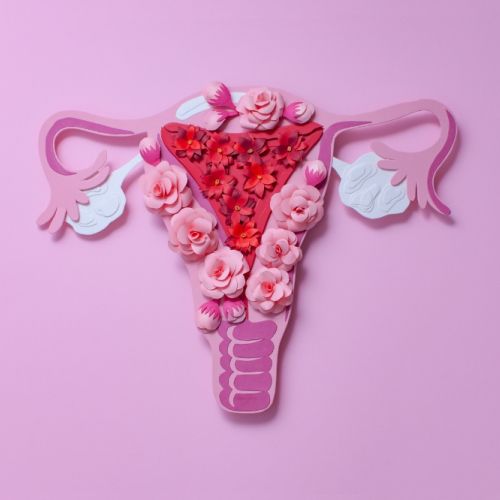How to Prepare for a Tubal Reversal

You have every right to change your mind after having a tubal ligation for “permanent” sterilization. If you do decide you want to add to your family after tubal ligation, our skilled providers at California Center for Reproductive Health are ready to help.
We offer advanced surgical techniques with very high rates of success. If you’re considering a tubal reversal, here’s how to prepare.
Initial consultation
Both you and your partner will need a consultation and physical exam prior to scheduling your tubal reversal. This exam helps determine your eligibility for reversal. It can also reveal any other issues that might stand in the way of pregnancy even after a successful reversal. It helps if you can bring any information from your original tubal ligation procedure.
Blood tests, imaging tests (like an ultrasound) to look at your ovaries and other reproductive organs are part of your initial evaluation. As part of this workup, we also have you undergo a hysterosalpingogram to check the length and viability of your remaining fallopian tubes. Your original tubal ligation blocked these tubes where the sperm and egg meet for fertilization.
Your partner may benefit from a sperm and semen analysis to make sure there are no fertility issues.
Before surgery
If we determine that a tubal reversal is possible, we will schedule your surgical appointment. It can happen anytime during your menstrual cycle.
We’ll have you undergo a preoperative exam about 2 weeks before surgery. This exam makes sure you’re in generally good health. It includes a pelvic ultrasound and blood work. At this time, we’ll provide you with instructions to prepare you for your procedure. For example, you should not eat or drink anything after 10pm the night prior to your surgery.
Most types of tubal ligation are reversible
Rest assured that we can reverse just about every type of tubal ligation. Even if your tubes were “burned” (or cauterized), the destruction happened at just a small segment of the tube, leaving much of the organ unharmed and viable.
Most women who undergo a tubal reversal are able to become pregnant within a year of the procedure. Your chances of success depend a lot on your age and whether or not you or your partner have other fertility issues.
We will not reverse a tubal ligation in women older than 45. Your likelihood of getting pregnant and carrying a healthy baby to term decreases significantly as you reach your late 40s.
If you’re unable to have a tubal reversal, know that you can still get pregnant using assisted reproductive technology (ART) methods, like in vitro fertilization. During these procedures, the egg and sperm are united in a laboratory and then placed directly into your uterus, bypassing your fallopian tubes. In vitro is a valid alternative to tubal reversal when the goal is to have a healthy baby.
Call one of our offices in Encino, Alhambra, Valencia, or West Hollywood if you’re ready to explore your fertility options. We want to help you create the family you want in the easiest, least invasive way. You can also reach out to us via this website.
Eliran Mor, MD
Reproductive Endocrinologist located in Encino, Valencia & West Hollywood, CA
FAQ
What does a reproductive endocrinologist and infertility specialist do?
Reproductive endocrinology and Infertility is a sub-specialty of Obstetrics and Gynecology. In addition to managing medical and surgical treatment of disorders of the female reproductive tract, reproductive endocrinologist and infertility (REI) specialists undergo additional years of training to provide fertility treatments using assisted reproductive technology (ART) such as in vitro fertilization.
Reproductive endocrinologists receive board certification by the American Board of Obstetrics and Gynecology in both Obstetrics and Gynecology and Reproductive Endocrinology and Infertility.
When should I see an REI specialist?
In general, patients should consider consulting with an REI specialist after one year of trying unsuccessfully to achieve pregnancy. The chance of conceiving every month is around 20%, therefore after a full year of trying approximately 15% of couples will still not have achieved a pregnancy.
However, if a woman is over the age of 35 it would be reasonable to see a fertility specialist earlier, typically after 6 months of trying.
Other candidates to seek earlier treatment are women who have irregular menses, endometriosis, fibroids, polycystic ovary syndrome (PCOS), women who have had 2 or more miscarriages, or problems with the fallopian tubes (prior ectopic pregnancy).
What are the reasons we are having trouble conceiving?
Approximately 1/3 of the time cause for infertility is a female factor, 1/3 of the time a male factor, and the remaining 1/3 a couples’ factor.
At CCRH, we emphasize the importance of establishing a correct diagnosis. Both partners undergo a comprehensive evaluation including a medical history and physical exam.
Furthremore, the woman’s ovarian reserve is assessed with a pelvic ultrasound and a hormonal profile. A hysterosalpingogram (HSG) will confirm fallopian tube patency and the uterine cavity is free of intracavitary lesions. A semen analysis is also obtained to evaluate for concentration, motility, and morphology of the sperm.
Additional work up is then individualized to direct the best possible treatment option for each couple.
What is IVF? What is the process like?
In vitro fertilization (IVF) is the process that involves fertilization of an egg outside of a woman’s body.
The process starts with fertility drugs prescribed to help stimulate egg development. In your natural cycle, your body is only able to grow one dominant egg, but with stimulation medication we can recruit multiple eggs to continue to grow. After about 8-10 days of stimulation, the eggs are surgically retrieved and then fertilized with sperm in a specialized laboratory. Fertilized eggs are then cultured under a strictly controlled environment within specialized incubators in the IVF laboratory for 3-5 days while they develop as embryos. Finally, embryos (or an embryo) are transferred into the uterine cavity for implantation.
Should I have IVF?
Before deciding if IVF is the right choice, it’s important to sit down with an REI specialist to discuss available treatment options. For some people, other methods such as fertility drugs, intrauterine insemination (IUI) may be the best first choice treatment. At CCRH, we believe each individual couple is unique and not everyone needs IVF.
Is the IVF procedure painful?
While not painful, the fertility medications may some side effects including headaches, hot flashes, mood swings, and bloating. The injection sites may also bruise.
Will IVF guarantee a baby?
Unfortunately, no. Many people think once they start IVF it’s a matter of time that they will be pregnant and have a baby. But according to national statistics per the Society of Assisted Reproduction (SART), on average 40% of assisted reproduction cycles achieve live births in women under age 35. The chances of success then continue to decrease with advancing age.
At CCRH, we employ only evidence-based interventions to ensure patient safety and optimal outcome. While we cannot guarantee a baby, we guarantee that you will receive the best, most advanced, personalized care to help you maximize your chance of a baby.
What is the success rate for IVF?
The average IVF success rate (success measured in live birth rate) using one’s own eggs begins to drop around age 35 and then rapidly after age 40. This is due to the decline in egg quantity and egg quality as a woman ages.
Our clinic’s success rate consistently beats the national average year after year.
Do insurance plans cover infertility treatment? How much does IVF cost?
Individual insurance plans often do not have any coverage for infertility treatments. If you have a group plan, you can call members services to see if they have coverage for infertility (including consultation/workup and IVF).
After your consultation with our REI specialist, one of our dedicated account managers with sit with you to go over the cost of treatment.




